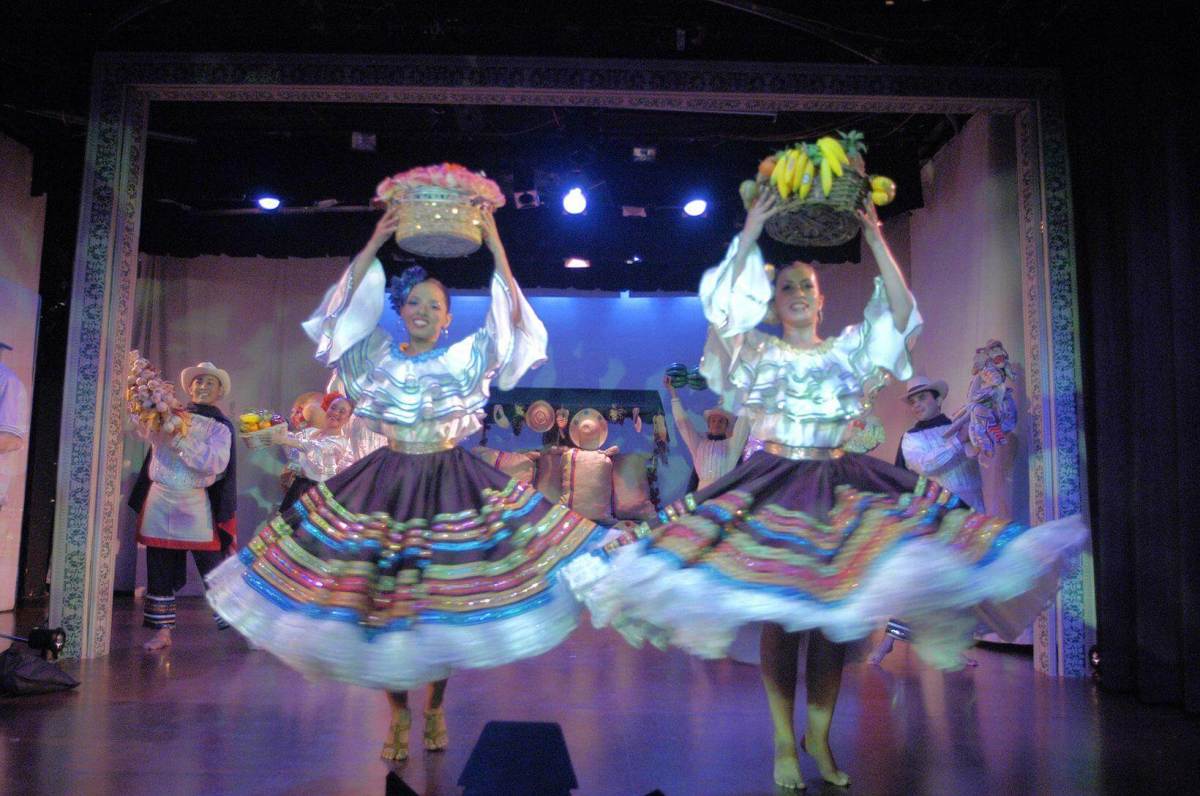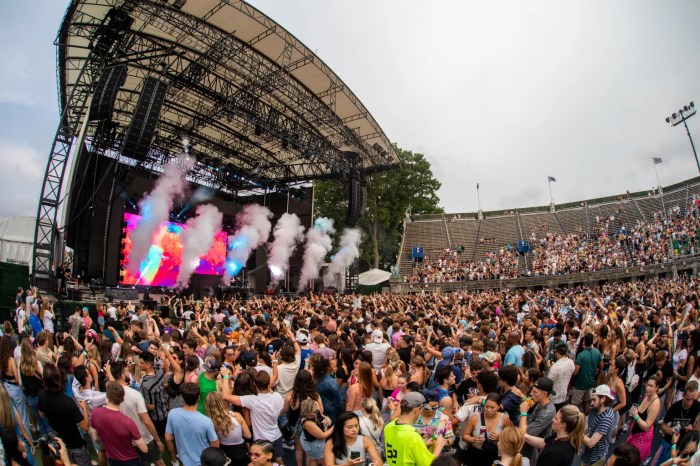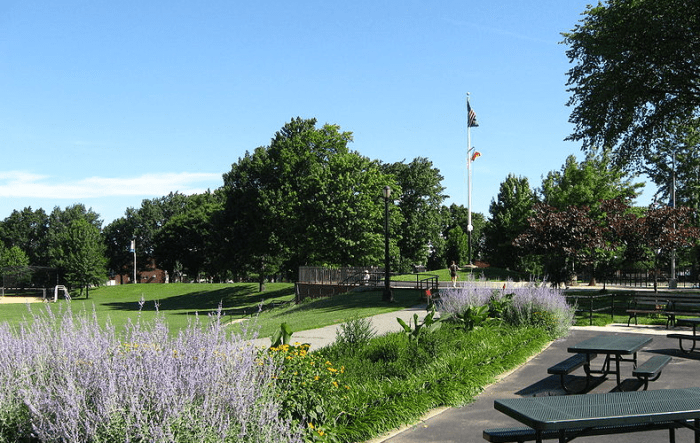By Arlene McKanic
Two things that let you know you’ve seen a great dance performance: You’re exhausted at the end but want to dance all the way home anyway.
Such is the case with “Colombia: Alma y Pasion,” a joyful and energetic show at the Thalia Spanish Theatre until Nov. 7. The dancing was so energetic at times that the reviewer worried some bit of some dancer’s elaborate costume would come undone and go flying into space. A few minor things did unravel — there were no major wardrobe malfunctions — but it only added to the excitement.
The program, which celebrates the 200th anniversary of Colombia’s independence from Spain, is without intermission and separated into four acts, which represent the country’s four major regions: the Andes, the Eastern Plains, the Pacific Coast and the Atlantic Coast. Dances popular in those regions are presented. The viewer might be surprised to find out how Brazil-like Colombia is — the country also benefited greatly from the African diaspora in its arts and general culture.
The overture, composed by band leader Harold Gutierrez, presents all manner of Colombians, including two stately Indians in elaborate headdress, upper-class ladies in crinolines carrying parasols, fishermen, fruit sellers and chaps hefting burlap sacks of Colombian coffee. The dances reflect the everyday life, or what used to be the everyday life, of ordinary people.
The cumbia, for example, was a courtship dance of slaves. The women flounce about in voluminous skirts, which seem to speak their own language, and the men woo them wearing straw hats and flourishing red kerchiefs. The dancers move to composer Victor Manuel Gutierrez’s beautiful “El Arenal.” The traditional Seresese and La Mina express the hardship of slaves set to work in gold mines.
Some of the dances have a mischievous sensuality. Are those supposed to be creatures from the Black Lagoon if the creature was beautiful and sexy? the reviewer wondered as two dancers in sparkling black body suits crawled onto the stage. Actually, this dance is a traditional one called the Viborona. A product of the jungle on the Pacific coast, it’s all about folks stomping on the heads of vipers or bashing them with sticks. One can figure as much when the limp body of one of the slinky dancers is carried away on a pole.
The inexhaustible Mestizo Dance Co. — Michelle Jimenez, Sheyla Genao, Vanessa Ascanio, Amalfi Sanchez, Natalia Jimenez, Lilliam Uribe, Yolanda Castillo, Claudia Erazo, Julian Amezquita, Manuel Paque, Fernando Agudelo, Reinaldo Labrada, Miles Willada, Armando Morena and Fernando Mesa — is choreographed to perfection by Morena and Wilson Fernando Mesa, with Fabricio Saquicela as technical director. The numbers, save the remarkable “A Capella,” danced without music by female dancers, are backed up by Gutierrez’s powerful musicians. Moreno and Mesa designed the gorgeous costumes and accessories, which I suppose might include the Carmen Miranda hats piled with fruit and flowers.
Makeup and additional costumes and accessories were designed by Alex Fernandez. The sound is designed by Jaime Castullo and Angel Gil Orrios provides an often lush lighting design on the Thalia’s small stage.
The subtitle of the program is “Alma y Pasion,” which means “soul and passion.” Rarely has anything been so perfectly described.


































